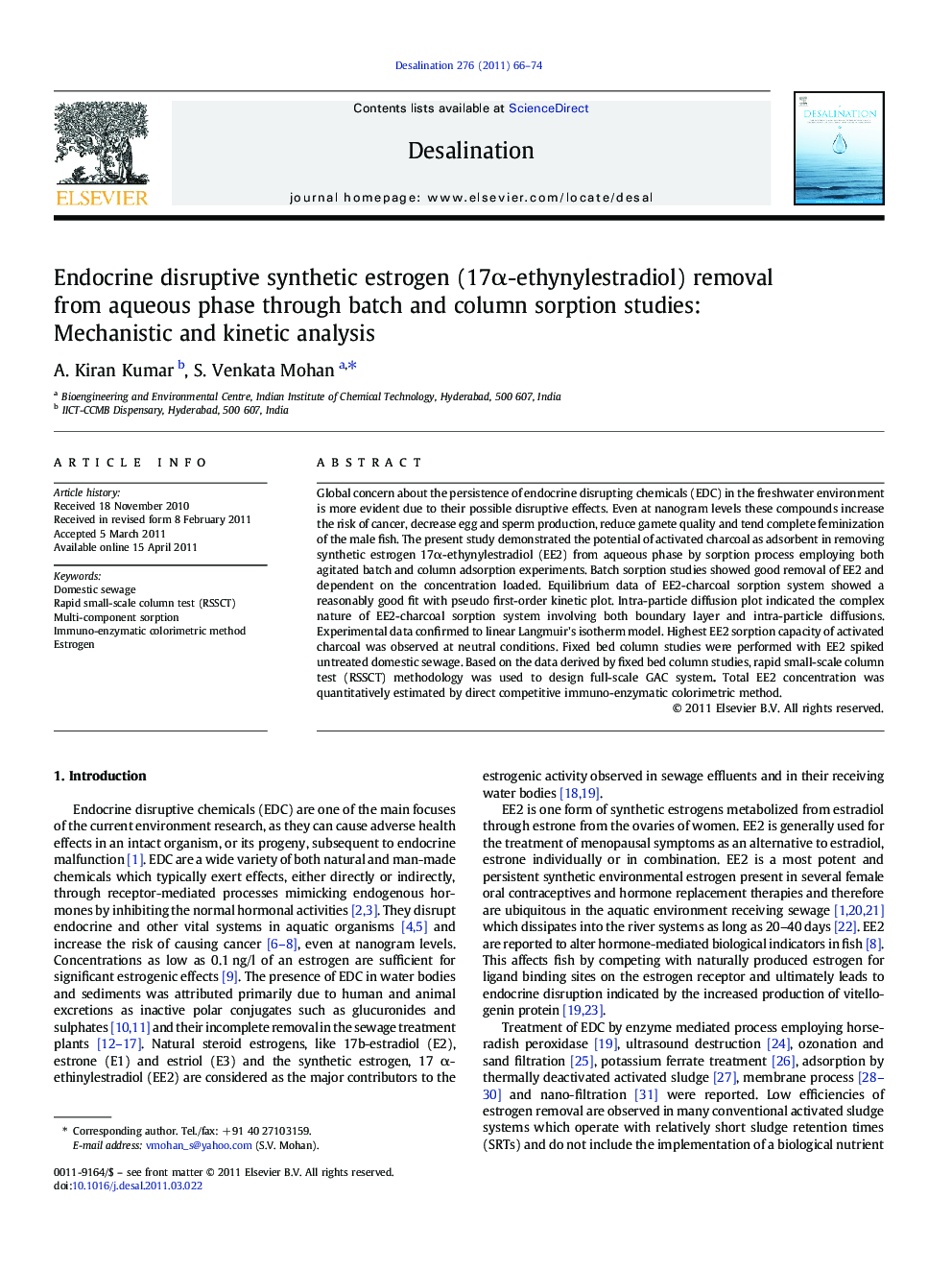| کد مقاله | کد نشریه | سال انتشار | مقاله انگلیسی | نسخه تمام متن |
|---|---|---|---|---|
| 624826 | 1455415 | 2011 | 9 صفحه PDF | دانلود رایگان |

Global concern about the persistence of endocrine disrupting chemicals (EDC) in the freshwater environment is more evident due to their possible disruptive effects. Even at nanogram levels these compounds increase the risk of cancer, decrease egg and sperm production, reduce gamete quality and tend complete feminization of the male fish. The present study demonstrated the potential of activated charcoal as adsorbent in removing synthetic estrogen 17α-ethynylestradiol (EE2) from aqueous phase by sorption process employing both agitated batch and column adsorption experiments. Batch sorption studies showed good removal of EE2 and dependent on the concentration loaded. Equilibrium data of EE2-charcoal sorption system showed a reasonably good fit with pseudo first-order kinetic plot. Intra-particle diffusion plot indicated the complex nature of EE2-charcoal sorption system involving both boundary layer and intra-particle diffusions. Experimental data confirmed to linear Langmuir's isotherm model. Highest EE2 sorption capacity of activated charcoal was observed at neutral conditions. Fixed bed column studies were performed with EE2 spiked untreated domestic sewage. Based on the data derived by fixed bed column studies, rapid small-scale column test (RSSCT) methodology was used to design full-scale GAC system. Total EE2 concentration was quantitatively estimated by direct competitive immuno-enzymatic colorimetric method.
Research Highlights
► Removal of synthetic estrogen (17-α ethynylestradiol (EE2)) was studied by adsorption.
► Batch sorption data showed good fit with linear Langmuir’s isotherm model.
► Fixed bed column studies for EE2 removal from domestic sewage was carried out.
► Rapid small-scale column test was employed for designing full scale GAC system.
Journal: Desalination - Volume 276, Issues 1–3, 2 August 2011, Pages 66–74